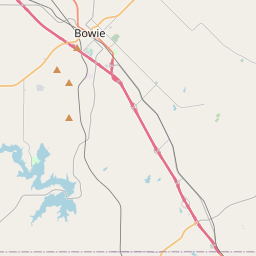Salona Cemetery
Historical marker location:






Settlement of Bethel community began in the 1870s, with the Ayers, Cherry, Cook, Couch, Hill, Lamb, Oliver, Overstreet, Park and Richardson families among the first settlers. The Salona School was open here by 1881. When a post office operated from 1889 to 1905, it also took the name Salona, since there was already a Bethel post office in Texas. The community included two churches, a blacksmith, and a medical office. The school consolidated with Bowie in 1952, and the school building was used as a community center until it was razed in 2007. John H. and Liadora Overstreet sold land to Bethel School District No. 53 for a burial ground in 1889. School trustees John Brigance, John Young, and Richard Hunt paid twenty dollars for the parcel. When the nearby Thompson School was demolished, burials from the cemetery at Thompson's Chapel were brought by wagons and reinterred here. In 1890, Harrell Lilly Cherry, Civil War veteran, became the first of many veterans to be buried here. Each May, starting in 1897, citizens of Salona met to maintain the graveyard and enjoy a time of fellowship with a potluck dinner. Reverend W. M. McKee would preach and lead the singing. Today, the tradition is still observed on the first Sunday of May in Montague County, as rural communities commemorate Decoration Day. The Salona Cemetery Association formed in 1897 with Rev. McKee as chairman and H. C. Knightstep as caretaker. In 1928, when additional acreage was needed, the W. C. Richardson family sold their land to increase the size of the cemetery. Salona Cemetery remains the final resting place of earlier generations and a chronicle of this rural settlement. Historic Texas Cemetery - 2010
As one of the most visible programs of the Texas Historical Commission (THC), historical markers commemorate diverse topics in Texas history, including: the history and architecture of houses, commercial and public buildings, religious congregations, and military sites; events that changed the course of local and state history; and individuals who have made lasting contributions to the state, community organizations, and businesses.
More history nearby
The first oil well in the United States was drilled in Texas in 1859. The discovery of oil transformed the economy of the state and helped to make Texas one of the wealthiest states in the nation.
The county's namesake, Daniel Montague, arrived in the area in 1854 and became one of the first permanent settlers. Montague County was officially established and organized in 1858, with Montague serving as its first county seat. However, due to ongoing conflicts with Native American tribes and accessibility issues, many of the early settlements faced challenges in their development.
The discovery of oil and gas reserves in Montague County in the early 1900s brought significant economic development to the region. This led to an increase in population and infrastructure, and the county experienced a boom in oil production during the mid-20th century. The county's economy diversified over time to include agriculture, manufacturing, and tourism, contributing to its growth and stability.
Today, Montague County is known for its picturesque scenery, with rolling hills, vast prairies, and scenic rivers attracting outdoor enthusiasts and nature lovers. The county also celebrates its history through its various museums, historical landmarks, and annual events, preserving the heritage and culture of the area for future generations to appreciate.
Montague County Timeline
This timeline provides a condensed summary of the historical journey of Montague County, Texas.
- 1857: Montague County is established by the Texas legislature
- 1860: The first county courthouse is built in the town of Montague
- 1861-1865: Montague County residents serve in the Confederate Army during the Civil War
- 1874: The town of Saint Jo is founded
- 1882: The Fort Worth and Denver City Railway extends into Montague County, promoting economic growth
- 1884: The town of Nocona is established
- 1900: The Montague County courthouse burns down and is subsequently rebuilt
- 1930s: The Great Depression and Dust Bowl impact the county, causing economic hardship
- 1957: The Montague County Courthouse is again destroyed by fire but is reconstructed
- 2000: The county experiences population growth and ongoing development